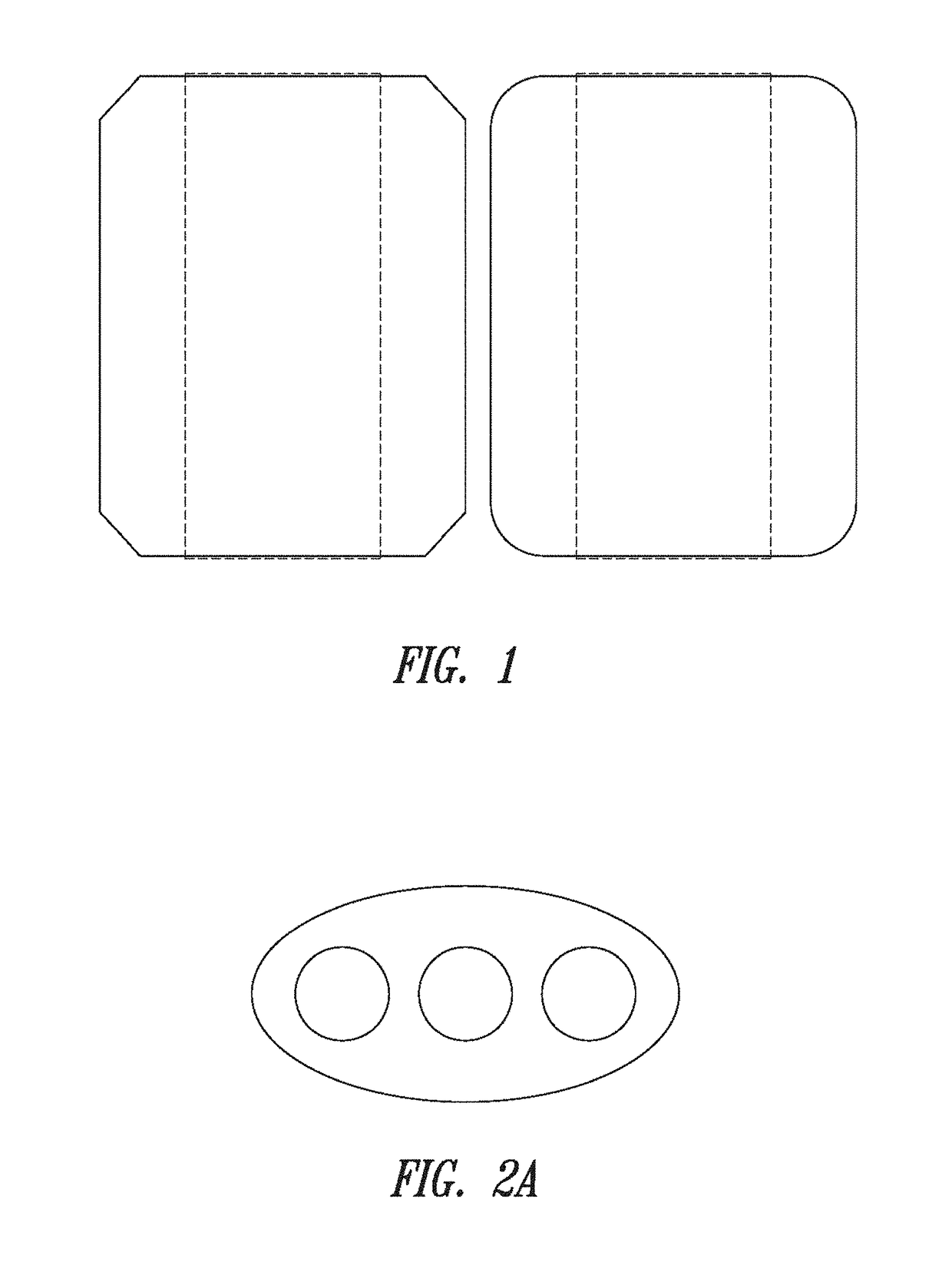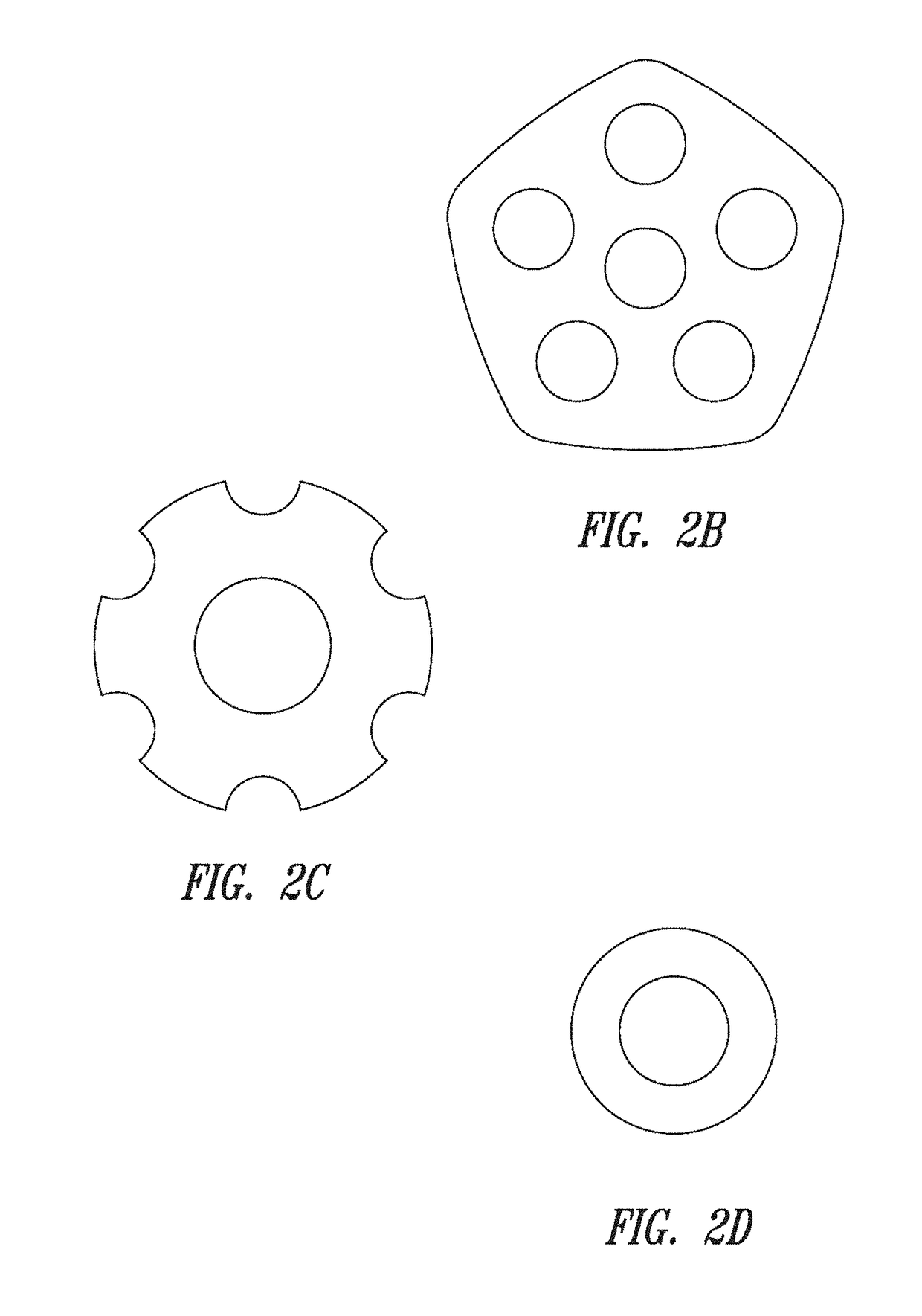Catalysts for natural gas processes
a natural gas and catalyst technology, applied in the direction of physical/chemical process catalysts, metal/metal-oxide/metal-hydroxide catalysts, bulk chemical production, etc., can solve the problem of not being able to commercialize ocm reaction, adsorption of reactants is often the rate limiting step, lack of effective catalysts and catalytic forms
- Summary
- Abstract
- Description
- Claims
- Application Information
AI Technical Summary
Benefits of technology
Problems solved by technology
Method used
Image
Examples
example 1
Oxidative Coupling of Methane in Molten Salt Media
[0685]0.4 g of catalytic nanowires comprising alkaline earth metals, transition metals and / or rare earth metals, which had been previously crushed to a fine powder, was suspended in 1.3 g of deionized water and 3.44 g of Hitec® Solar Salt (a mixture of sodium and potassium nitrite and nitrate salts, available from Coastal Chemical Co., LLC, Houston Tex.). The water was removed by heating on a hot plat at 240° C. followed by heating at 300° C. overnight.
[0686]The nanowire / salt suspension was heated to 500° C. No phase separation of the nanowires and salt was observed with or without stirring. Methane and air were bubbled through the suspension and the product gases were evaluated by gas chromatography.
example 2
Preparation and Analysis of a Blended Catalytic Material
[0687]Perovskite powder (1-2 microns) was blended with nanowires comprising lanthanide oxide and water. The water was removed and the blended catalytic material was formed into 6 mm diameter cylinders by pressing with 1 tonne of pressure. As a comparison, the same process was used to form 6 mm cylinders of perovskite without the lanthanide oxide nanowires. The strength and catalytic properties of the blended catalytic material and the perovskite were tested using 8 mm reactor tube at temperatures between about 500° C. to 650° C. and 0-8 barg. The results are summarized in Table 1 below.
[0688]
TABLE 1Properties of Blended Catalytic MaterialsLanthanidePerovskite withPerovskiteNanowiresLanthanideCrush N / mm16.625.122.6C2+ selectivity at 600° C.40%55%59%
example 3
Blended Catalytic Materials Having Reduced Shrinkage
[0689]Perovskite powder (1-2 microns) was blended with nanowires comprising lanthanide oxide and water. The water was removed, and the blended catalytic material was formed into 6 mm diameter cylinders by pressing with 1 tonne of pressure. As a comparison, the same process was used to form 6 mm cylinders of lanthanide oxide nanowires without the perovskite. Catalytic performance in the OCM reaction was tested using an 8 mm reactor tube at temperatures between about 500 to 650 C and 0-8 barg. Shrinkage was determined based on volume lost for the 6 mm diameter cylinders upon exposure to 900° C. in static air for 48 hours. Volume was measure using digital calipers and averaged for 5 cylinders. The data is presented in Table 2.
[0690]
TABLE 2Properties of Catalytic MaterialsLanthanidePerovskite withNanowiresPerovskiteLanthanideVolume Loss (48 h @ 900 C.)6%0%0.5%C2+ selectivity at 600° C.55%40% 59%
PUM
 Login to View More
Login to View More Abstract
Description
Claims
Application Information
 Login to View More
Login to View More - R&D
- Intellectual Property
- Life Sciences
- Materials
- Tech Scout
- Unparalleled Data Quality
- Higher Quality Content
- 60% Fewer Hallucinations
Browse by: Latest US Patents, China's latest patents, Technical Efficacy Thesaurus, Application Domain, Technology Topic, Popular Technical Reports.
© 2025 PatSnap. All rights reserved.Legal|Privacy policy|Modern Slavery Act Transparency Statement|Sitemap|About US| Contact US: help@patsnap.com



